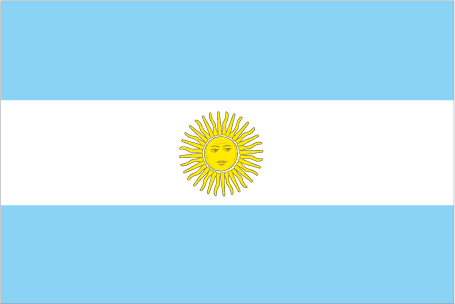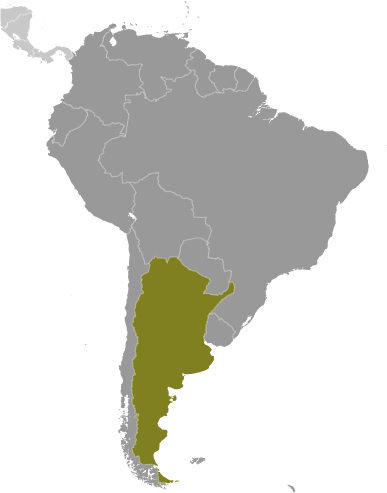
|
|
Advertisements:
People And SocietyNationality
Noun Argentine(s)
Adjective Argentine Ethnic groups
White (mostly Spanish and Italian) 97%, mestizo (mixed white and Amerindian ancestry), Amerindian, or other non-white groups 3% Languages
Spanish (official), Italian, English, German, French, indigenous (Mapudungun, Quechua) Religions
Nominally Roman Catholic 92% (less than 20% practicing), Protestant 2%, Jewish 2%, other 4% Population World Ranking: 32
42,192,494 (July 2012 est.)
Age structure
0-14 years
25.4% (male 5,429,488/female 5,181,289) 15-64 years 63.6% (male 13,253,468/female 13,301,530) 65 years and over 11% (male 1,897,144/female 2,706,807) (2011 est.) Median age
Total 30.7 years
Male 29.7 years Female 31.8 years (2012 est.) Population growth rate World Ranking: 118
0.997% (2012 est.)
Birth rate World Ranking: 112
17.34 births/1,000 population (2012 est.) Death rate World Ranking: 120
7.36 deaths/1,000 population (July 2012 est.) Net migration rate World Ranking: 112
0 migrant(s)/1,000 population (2012 est.) Urbanization
Urban population 92% of total population (2010)
Rate of urbanization 1.1% annual rate of change (2010-15 est.) Major cities - population
BUENOS AIRES (capital) 12.988 million; Cordoba 1.493 million; Rosario 1.231 million; Mendoza 917,000; San Miguel de Tucuman 831,000 (2009) Sex ratio
At birth 1.05 male(s)/female
Under 15 years 1.05 male(s)/female 15-64 years 1 male(s)/female 65 years and over 0.7 male(s)/female Total population 0.97 male(s)/female (2011 est.) Maternal mortality rate World Ranking: 84
77 deaths/100,000 live births (2010) Infant mortality rate World Ranking: 143
Total 10.52 deaths/1,000 live births
Male 11.76 deaths/1,000 live births Female 9.22 deaths/1,000 live births (2012 est.) Life expectancy at birth World Ranking: 68
Total population 77.14 years
Male 73.9 years Female 80.54 years (2012 est.) Total fertility rate World Ranking: 95
2.29 children born/woman (2012 est.) Health expenditures World Ranking: 37
9.5% of GDP (2009)
Physicians density
3.155 physicians/1,000 population (2004) Hospital bed density
4 beds/1,000 population (2005)
Hiv/aids - adult prevalence rate World Ranking: 66
0.5% (2009 est.)
Hiv/aids - people living with hiv/aids World Ranking: 39
110,000 (2009 est.)
Hiv/aids - deaths World Ranking: 46
2,900 (2009 est.)
Major infectious diseases
Degree of risk Intermediate
Food or waterborne diseases Bacterial diarrhea, hepatitis A Water contact disease Leptospirosis (2009)Children under the age of 5 years underweight World Ranking: 107
2.3% (2005)
Education expenditures World Ranking: 64
4.9% of GDP (2007)
Literacy
Definition
Age 15 and over can read and write Total population 97.2%Male 97.2% Female 97.2% (2001 census) School life expectancy (primary to tertiary education)
Total 16 years
Male 15 years Female 17 years (2007) Unemployment, youth ages 15-24 World Ranking: 50
Total 21.2%
Male 18.8% Female 24.7% (2009)
Comments
Add a new comment: |
Advertisement
Members area
Argentina (Buenos Aires):
 
GPS points from Argentina (Buenos Aires)
|
||||||||

 In 1816, the United Provinces of the Rio Plata declared their independence from Spain. After Bolivia, Paraguay, and Uruguay went their separate ways, the area that remained became Argentina. The country's population and culture were heavily shaped by immigrants from throughout Europe, but most particularly Italy and Spain, which provided the largest percentage of newcomers from 1860 to 1930. Up until about the mid-20th century, much of Argentina's history was dominated by periods of internal political conflict between Federalists and Unitarians and between civilian and military factions. After World War II, an era of Peronist populism and direct and indirect military interference in subsequent governments was followed by a military junta that took power in 1976. Democracy returned in 1983 after a failed bid to seize the Falkland Islands (Islas Malvinas) by force, and has persisted despite numerous challenges, the most formidable of which was a severe economic crisis in 2001-02 that led to violent public protests and the successive resignations of several presidents.
In 1816, the United Provinces of the Rio Plata declared their independence from Spain. After Bolivia, Paraguay, and Uruguay went their separate ways, the area that remained became Argentina. The country's population and culture were heavily shaped by immigrants from throughout Europe, but most particularly Italy and Spain, which provided the largest percentage of newcomers from 1860 to 1930. Up until about the mid-20th century, much of Argentina's history was dominated by periods of internal political conflict between Federalists and Unitarians and between civilian and military factions. After World War II, an era of Peronist populism and direct and indirect military interference in subsequent governments was followed by a military junta that took power in 1976. Democracy returned in 1983 after a failed bid to seize the Falkland Islands (Islas Malvinas) by force, and has persisted despite numerous challenges, the most formidable of which was a severe economic crisis in 2001-02 that led to violent public protests and the successive resignations of several presidents.